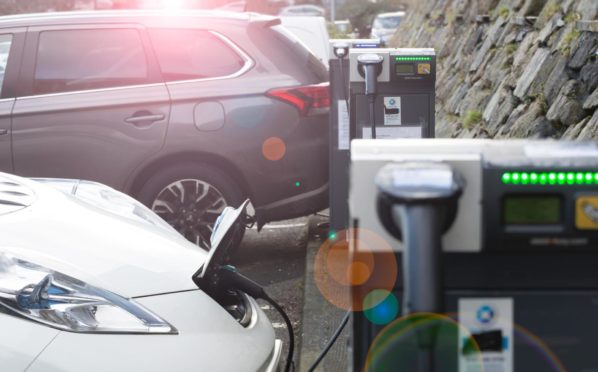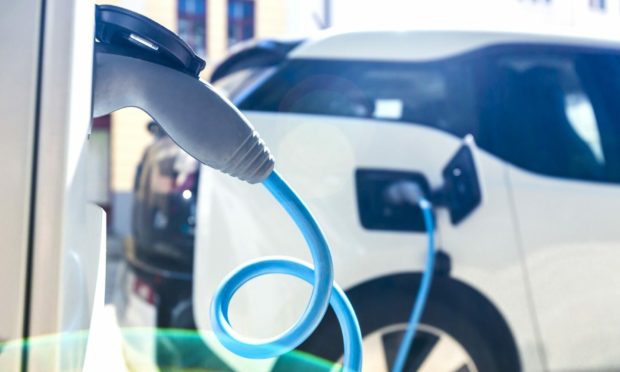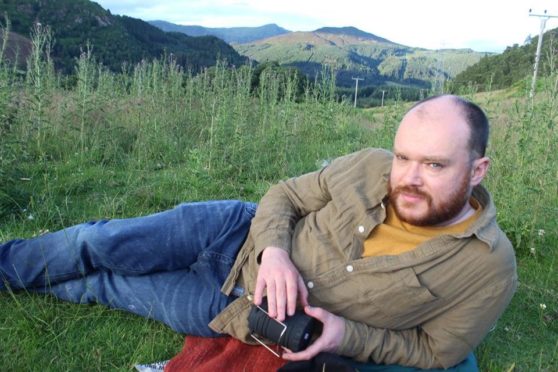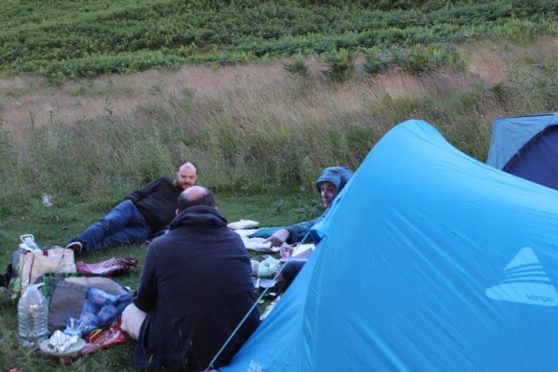Transport and environment reporter Scott Milne hired an electric car for a weekend camping trip in Perthshire.
After hearing glowing reports from EV owners for previous articles, he expected it to be a breeze.
However, what he found was a chaotic and unpredictable infrastructure.
This is his experience…
We were somewhere around Dunkeld when the low-battery signal began to flash.
Easy to use? Think again.
What I found is an infrastructure that has some way to go before electric cars overtake petrol and diesel vehicles.
I don’t doubt the electric car owners I have spoken to have been genuine when they praise their pride and joy, and claim long trips just need the odd stop here and there at the plentiful stations.
But my experience was worlds away from theirs.
Is the battery half-full or half-empty?
The weekend did not start well. I wasn’t on the road long when I realised the car was not fully charged. The battery was about half empty.
Granted that is a singular mishap that does not have anything to do with the infrastructure, but it was a sign of things to come.
Because of the depleted battery, it didn’t take long from setting off from Dundee to get the dreaded battery light telling me the car needed a recharge.
My destination of Pitlochry was looking questionable. I calculated I could make it, but with about 10 miles left on the battery, meaning the return journey the next day was out of the question without juice.
It’s okay, I’ll charge when I get there and hang around longer than intended. A coffee wouldn’t go amiss.
Pitlochry isn’t too bad for charging points. The town centre’s car park has a handful of stations, each with capacity for at least two cars. Some even offer a faster charge.
Predictably on a Saturday afternoon, most of the points were taken — not helped by the fact one of the fast-charging stations was broken.
One of the slower points was free, so I hooked up. The light showed it was charging. Pitlochry is a lovely town for a walk anyway.
About an hour later we returned, unplugged and switched on the engine. Despite what the station’s interface told me, it wasn’t charging. There was still only about 10 miles left before the battery would give up on me.
Why this didn’t work remains a mystery.
Giving up
Patience frayed, I decided to head out to where I was camping. It was only about two miles out of Pitlochry, so I would be okay making it back on Sunday morning for a charge. I might have better luck getting a fast charge point.
While wrestling with the cables that morning, a driver parked up at the (still broken) fast charger. I struck up a conversation, telling him it was busted on Saturday as well.
He told me about a recent trip which took in Aboyne, Breamar and Ballater. Every charger was broken.
“I have enough battery life to get home, I just wanted a wee top-up while I was here,” he told me before driving off. It’s all right for some, I thought.
In any event, after a two-hour charge — walking the opposite direction and taking in the Pitlochry Dam this time — I had enough to get home. Halleluiah.
Heading home
I stopped at Perth for a quick top-up because the car suddenly decided it hadn’t charged as much as it originally told me it did.
There was another headache there, but you’ve read enough. I made it home alive, and I was grateful for that, if nothing else.
Needless to say, it took a half-hour phone call for an assistant to remotely get the charger working.
And even then it started working after she told me she had just received a signal saying it was faulty.
As lovely and helpful as she was, even the people running the infrastructure don’t seem to know how the infrastructure operates.

Even Hunter S Thompson’s chemically-induced imagination would struggle to come up with this.
There’s a cliché that technology is great… when it works. Never have I agreed with that more.
Getting the infrastructure in place to support more electric cars is very much a work in progress.
There’s a big push to get us to go electric. But based on my experience, it’s going to be a long road before that becomes feasible.
If governments and local authorities want us to buy the ticket and take the ride, they need to hold up their end of the bargain and make it as hassle-free as possible.


